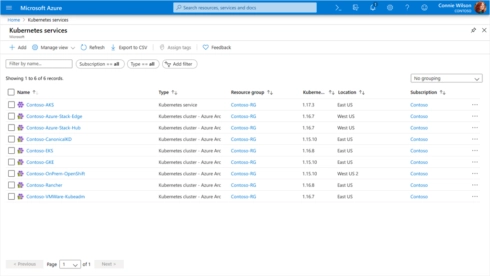
Microsoft is giving its Azure users the ability to connect and configure to any Kubernetes cluster. The company announced a preview of Azure Arc enabled Kubernetes, which works across customer data centers, edge locations and multi-cloud.
Azure Arc is the company’s solution for extending Azure services and management to any infrastructure. “With Azure Arc, customers can connect and configure Kubernetes clusters and deploy modern applications at scale. Azure Arc also allows customers to run Azure data services on these Kubernetes clusters,” Jeremy Winter, partner director for Azure Management, wrote in a post.
The company also announced support for most CNCF-certified Kubernetes distributions and the first set of Azure Arc integration partners, which includes Red Hat OpenShift, Canonical Kubernetes, and Rancher Labs.
“Developers creating modern applications are adopting Kubernetes to spend more time focused on the application and less on the infrastructure. There is a rich Kubernetes ecosystem ranging from off-the-shelf Helm charts to developer tooling to use. Using your existing DevOps pipelines, Kubernetes manifests, and Helm charts, Azure Arc enables deployment to any connected cluster at scale. Azure Arc enabled Kubernetes adopts a GitOps methodology, so customers define their applications and cluster configuration in source control. This means changes to apps and configuration are versioned, enforced, and logged across any number of clusters,” Winter wrote.
Additionally, the solution provides an operating model for Kubernetes clusters deployed across multiple locations and brings Azure management to clusters.
Key features include inventory and organization, governance and configuration, integrated DevOps and management capabilities, and a unified tool experience.
“Red Hat OpenShift delivers the industry’s most comprehensive enterprise Kubernetes platform, with a proven track record and large installed base and tailor-built for workloads that need to run across the hybrid cloud. Azure Arc helps to provide a common control plane for OpenShift from corporate datacenters to the public cloud, providing a single management point for organizations seeking to pair the flexibility and innovation of OpenShift with the scalability and power of Azure.” said Mike Evans, vice president of technical business development at Red Hat OpenShift.








